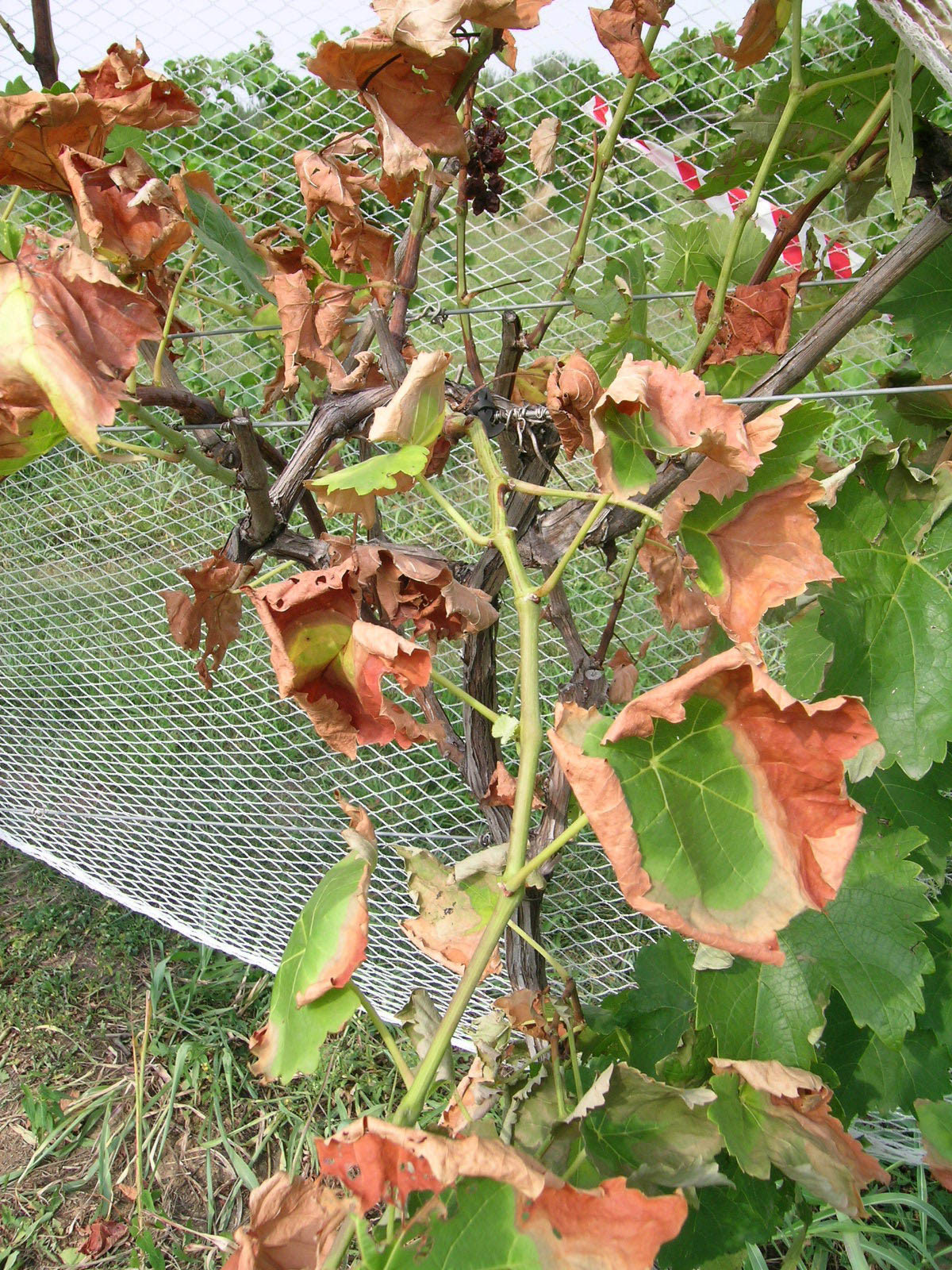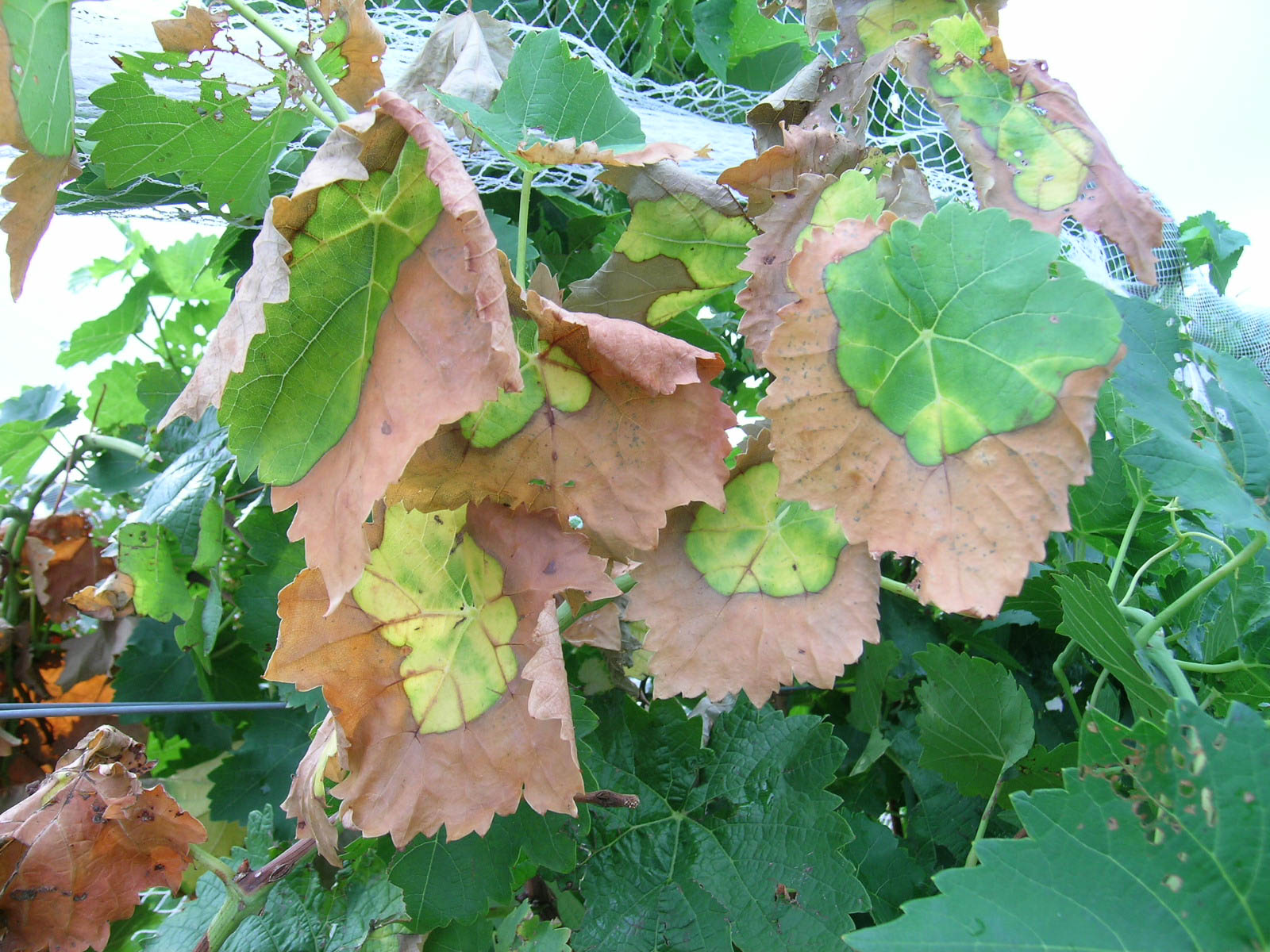Pierce's Disease of Grapes
Return to Diseases
Pierce’s disease (Xylella fastidiosa) is a bacterial disease that causes leaf and cane dieback, and eventually plant death. The bacterium infects plant vascular tissue (xylem), resulting in restricted water uptake. Early symptoms begin as scorching, drying, and withering along leaf margins. As scorching spreads inward, leaves wither and drop; often petioles remain attached. Affected canes remain succulent and green but fail to mature; this symptom may extend into the dormant season. As disease progresses, plants exhibit delayed budbreak, stunting, short internodes, and small leaves. Sucker shoots are often associated with severely infected plants. Infected plants die within 5 years, and young or stressed plants die more rapidly. Transmission occurs when leafhopper, sharpshooter, and spittlebug vectors ingest bacteria from xylem fluids of infected plants (grapes, grasses, shrubs, trees) and then feed on noninfected grapevines. Symptoms are more severe on V. vinifera than on American species. Bacterial cells overwinter in xylem tissue of infected plants. Pierce’s disease is not common in Kentucky vineyards.

Marginal leaf scorch caused by Pierce's disease.
(Photo: John Strang, University of Kentucky)

Close-up of Pierce's disease foliar symptoms.
(Photo: John Strang, University of Kentucky)
Management:
- Avoid establishing orchards near alternative hosts.
- Select tolerant cultivars.
- Practice proper sanitation (remove infected vines).
- Manage vectors; insecticides used for other insect pests may control populations.
